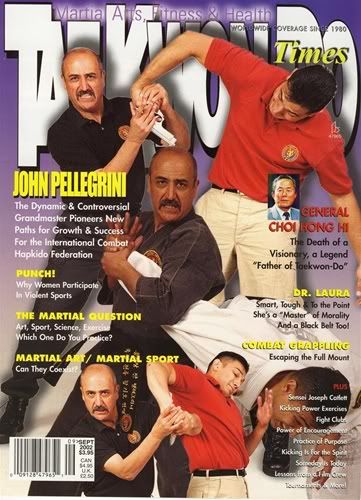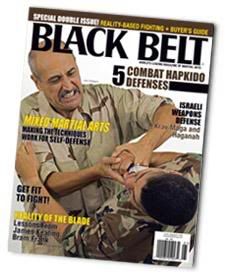Shared Combat Hapkido Principles -
Numerous Hapkido styles are practiced around the World. What differentiate these various styles of Hapkido from each other is they each may Stress Different Aspects, Incorporate New Practices, or Omit Older Ones. “Combat Hapkido,” along with all other styles of Hapkido will generally share 5 Underlining Principles. These Principles Unify all Hapkido styles, and make it a Uniquely Identifiable Martial Art.
* Force Redirection
* Force Blending
* Constant Movement, Varied Rhythm
* Circular Movement
* Live-Hand and Ki-Finger
Force Redirection
In Hapkido, you’ll hardly ever defend against an attacker by using your Strength against the attacker’s Strength. This style of Defense is normally seen in “Hard Styles” of Martial Arts such as Japanese Karate, and Korean Taekwondo. Hapkido maximizes power efficiency by redirecting and avoiding an attacker’s force head-on. Head-on attacks normally waste more energy, and have a greater chance of injury to you.
Redirecting Momentum, Strike Avoidance, and Breaking Balance of the Attacker allows you to use their power to strengthen and increase the efficiency of your own Defense.
Force Blending
Blending with an attacker’s force can be thought of in a sense as dancing with a partner. When dancing you’re matching the speed of the music and moving to the beat of the type of music you’re listing to. You wouldn’t dance fast to a slow song, and you wouldn’t do a Waltz to Hip Hop Music. The same is true when defending yourself; you’ll need to know when to flow with and attacker, using the flowing momentum against your attacker, and then knowing when the time is right to attack.
To accomplish Force Blending you’ll need to utilize footwork, timing, speed, commitment of movement, and versatility, which any Martial Art Practitioner regardless of style needs.
Constant Movement, Varied Rhythm
Hapkido strategy is characterized by a constant, varied flow of striking, blocking, holding, and throwing techniques executed from highly mobile stances. Footwork and body movement is constant and may incorporate circular, spinning, or off axis movements. By constantly varying body position and rhythm of attack, you become much more difficult to target and you are much more likely to disorient and frustrate your opponent.
Circular Movement
Hapkido techniques can be characterized by their circular movements. These circular movements are utilized in strikes, holds, joint locks, chokes, throws, footwork, and overall body movements, and can be either large or small circles, depending upon the technique or the particular Hapkido system. Some Hapkido systems focus on larger movements. Others systems stress smaller circles for more direct application of force. In the hands of skilled masters, many Hapkido techniques like those of “Combat Hapkido” are applied using small circular motions - especially joint locks, but in all Hapkido Styles Circular movement whether small or large are prevalent.
Live-Hand and Ki-Finger
The term Live-Hand and Ki-Finger refers to specific hand formations which when used efficiently use your strength to focus your power into the movement of the hands and arms. This can seemingly increase your strength because of the focused nature of the hand formations, and provide you the power when most needed, such as during a wrist escape or during the application of a joint lock hold. Live-Hand and Ki-Finger techniques involve visualization, breath control, and tensing of the fingers, hands, and arms. Concentration and focus are very important, as is practice. The use of Live-Hand is typically characterized by extending one or more fingers and breathing out as a specific technique is applied.












